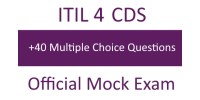Excited about integrating the structured approach of the TOGAF® Standard with the flexibility of Agile sprints! By aligning Enterprise Architecture with Agile methodologies, organizations can adapt swiftly to change while maintaining strategic vision.
Key Points:
1. Integration of TOGAF and Agile Practices:
- The guide discusses strategies for combining the structured approach of the TOGAF Architecture Development Method (ADM) with the flexibility and iterative nature of Agile sprints.
- It emphasizes that Enterprise Architecture can benefit from Agile practices by becoming more responsive and adaptive to changing business needs.
2. Applying Sprints in the ADM Phases:
- Shows how sprints can be used throughout the different phases of the ADM, such as Architecture Vision, Business Architecture, Information Systems Architecture, and Technology Architecture.
- Provides patterns and examples of how sprints can deliver architectural components incrementally.
3. Collaborative Approach:
- Highlights the importance of collaboration between Enterprise Architects, Solution Architects, and Agile teams.
- Suggests ways for architects to work alongside Agile teams to ensure architectural considerations are integrated into the development process.
4. Minimum Viable Architecture (MVA):
- Introduces the concept of Minimum Viable Architecture, similar to the Minimum Viable Product (MVP) in Agile.
- MVAs allow for delivering essential architectural elements quickly, enabling faster value delivery and feedback incorporation.
5. Adaptive Patterns:
- Recognizes that organizations may be at different stages of Agile adoption and provides flexible patterns that can be adapted to various contexts.
- Encourages tailoring the approach based on the organization's specific needs and maturity in Agile and Enterprise Architecture practices.
6. Benefits of Integration:
- Combining TOGAF with Agile methodologies helps achieve a balance between strategic planning and rapid delivery.
- Enhances the ability to manage change effectively while maintaining architectural integrity and alignment with business objectives.
7. Supporting Resources:
- The guide references additional resources, such as other TOGAF Series Guides, white papers, and links to Agile frameworks and tools.
- Encourages readers to explore these materials for a deeper understanding and practical application.
Looking to integrate the structured approach of the TOGAF® Standard with the flexibility of Agile sprints? Here's how!
Practical Example:
Imagine you're working on a digital transformation project. Instead of following a traditional "waterfall" approach, you break the work into Agile sprints. In the first sprint ("Sprint Zero"), you define the initial vision and create a Minimum Viable Architecture (MVA) that will guide the subsequent sprints.
In the following sprints, the architecture team collaborates closely with development teams to iterate on the architecture and deliver incremental solutions that add value to the business. For example, in the second sprint, you might focus on the data architecture, while in the third sprint, you concentrate on the application architecture.
Embrace agility without compromising on architectural integrity! Let's drive innovation together.







